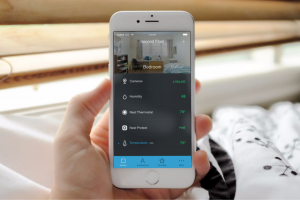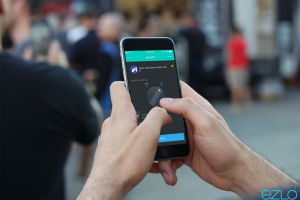Why the Right Partner is Crucial for Your Smart Home Business
- March 30, 2022
- by Ezlo Admin
To enter the smart home market, there are cases for operators to consider.
In 2015, an article was published in the Journal of Operations Management studying 147 multi-partner R&D projects. Analyzing the phenomenon of growing partnership deals, the authors state that it appeared due to today’s market challenges. Shorter product lifecycles, advances in communication technologies, and other competitive pressures force even the top market players like IBM, General Motors, and Boeing to make use of partnerships. For smaller firms, this similar approach becomes critically important.

Eventually, the authors reveal that the best results take place when you and your partners are tightly focused on a predefined range of goals and equally contribute to your project.
Indeed, Cisco’s study conducted in May 2017 shows that the reason why many IoT projects fail can be either addressed by proper partnerships or appear due to partners who failed to stick with their obligations. For instance, projects which take too long, lack expertise, or quality data could all be supplemented and fixed by effective collaborations with companies able to either provide ready-made solutions or outsource a part of the scope of work.
What’s most interesting in the study is that the most successful organizations involve partners at every stage of their IoT projects.
Being a part of the IoT universe, the smart home market reveals the same trend: most issues of the smart home market appear due to a lack of successful partnerships. Let’s review the top 3 reasons it’s critical to find the right partner.
Keeping in mind interoperability
One of the key issues where partnerships can play a crucial role in the smart home market is bad interoperability, i.e. the lack of globally accepted standards to help build smart home devices that could easily communicate with other, older and newer devices.
Although there are such technologies as Z-Wave, Zigbee, Wi-Fi, LTE and the emerging 5G, the lead analyst at Moor Insights and Strategy Mike Krell shares his thoughts with Networkworld:
«I can’t honestly say that today we have standards being developed that let everything work together».
In our case, at eZLO, we stick to Z-Wave technology because it was invented and is currently maintained by an alliance currently consisting of over 450 companies.
Making it cross-platform
If you’re making a home automation device, you most probably expect your customers to control and manage it via an interface on the web or on their smartphones. Thus, you need iOS and Android experts as well as web developers. A server infrastructure required to collect, store and analyze user data also requires maintenance. Often, manufacturers also need a handy dashboard to see and process this data, which requires additional development efforts.
This is where the partnership is crucial if you want to focus on the main features of your device.
Thinking bigger
Any smart home device eventually becomes a part of a bigger system, of a smart home network. Thus, many market players think in advance: how can their product integrate as part of a bigger solution or platform from the beginning of its life cycle?
For instance, if you’re making a motion sensor, it can be a great supplement for another new home security solution or a smart HVAC system including other kinds of devices and a control panel to manage them.
Not only does such an approach require you to partner with companies able to help you create and market such solutions, but also keeps in mind the perfect interoperability mentioned above, smooth user experience, improvement strategy, and so on, which is done best in tight collaboration with your partners.
Partnerships are not only what helps you overcome challenges in the smart home business. Often, they alone become the reason for the solution’s success.
For instance, thanks to the partnership between Los Angeles and Philips lighting, the whole city converted its street lights to smart LED lighting. Adi Gaskell with Forbes reports yearly energy savings are expected to be around 63%. In terms of the greenhouse effect, imagine it as 10,000 passenger vehicles suddenly stopped driving and polluting the streets of the city. And how many people do you think will get Philips LEDs for their homes after hearing about this story?
Bottom line
While partnerships are not unique to the smart home industry, it turns out they might be as crucial as ever before for emerging home automation projects. Market uncertainty and strict deadlines require businesses to seek ways to optimize their productivity and gain competitive advantages with effective partnerships.
That’s why here at eZLO, we advocate our core mission behind our solutions for smart home businesses is not to help you increase revenue or attract more customers, but to be a perfect partner in helping you succeed in your ventures.
See Also




